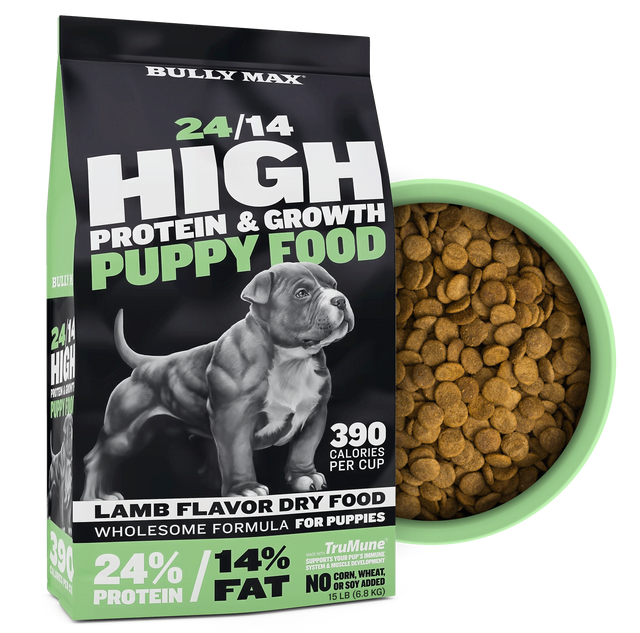How Much Exercise Do Dogs Need?
As a dog owner, you want to be sure your four-legged friend is getting what they need to live a long, healthy life. If you’re like most people, you’ve probably wondered how much exercise your dog needs every day. A dog’s exercise plan is not one size fits all and will vary depending on the dog breed, activity level, health, and age.
Just like people, dogs need an exercise routine to stay physically and mentally in shape. Without exercise, dogs are at an increased risk of obesity, and they can become bored, frustrated, and even depressed. Other behavior problems include:
- Hyperactivity
- Barking and whining
- Destructive behavior
- Withdrawal
- Low stamina
Regular daily exercise at every stage of life is important for your dog’s overall health. Experts recommend at least 30 minutes and up to two hours of exercise, depending on your dog’s age, breed, size, and health. This can be a brisk 30-minute walk, a visit to the dog park or doggy day care, or playing fetch.
We’ll share our best advice on how much exercise a dog needs by age, but if you have any questions or concerns please reach out to your vet.
How Much Exercise a Dog Needs by Age
The amount of daily exercise your dog needs depends a lot on their age. The needs of a senior dog differ from a high-energy puppy. But even so, less active, older dogs benefit from short walks to tone muscle and improve metabolic function.
So, how much exercise does a dog need by age? In the following sections, you will learn basic guidelines to help you develop an exercise routine for your puppy, adult pooch, or senior dog and playtime activities you can do with your furry friend to keep them physically fit and happy.

How Much Exercise Does My Puppy Need?
As a rule of thumb, watching your puppy is the best way to see if they have had enough exercise. Go at your puppy’s pace. When they get tired on a walk, let them take a rest. They will usually let you know this by plopping down on the ground and not budging. Free play is also a great addition to daily walks. Playtime offers the benefits of exercise while you bond with your puppy.
Watch for signs of getting tired, and let them rest when they’ve had enough. A border collie puppy will have different exercise needs than pugs or bulldogs. Herding breeds, like collies, need plenty of exercise and activities that offer mental stimulation to keep them from getting bored. Bulldogs, pugs, and other flat-face breeds struggle to breathe with long exercise sessions. Your pup is the best indicator of how much exercise is good enough.
As your puppy reaches adulthood, their stamina will increase, and they will be able to handle a longer amount of exercise.
How Much Exercise Does My Adult Dog Need?
Like puppies, adult dogs need plenty of exercise to keep them healthy and out of trouble. This can be a stroll around the neighborhood, jogging, and even dog interval training. Adult dogs need between 30 minutes up to two hours of activity every day.

The American Society for the Prevention of Cruelty to Animals (ASPCA) recommends a daily 30-minute walk plus cardio for adult dogs. This includes activities like swimming and running. You can even partner with your dog for high-intensity interval training (HIIT). Dr. Mark LeMay with LeMay Chiropractic and Wellness offers a basic dog exercise routine to get you and your pooch started.
Your four-legged friend’s breed matters, too, and will determine how much or how little exercise they need. Larger working or herding breeds, such as rottweilers and German shepherds, need long walks and extra activity, or else they will get bored. They will adapt unwanted behaviors, such as excessive barking, digging, and destroying shoes, toys, you name it. Exercising up to two hours a day is recommended for working and herding breeds and can be broken up into two or more sessions.
How Much Exercise Does My Senior Dog Need?
Older dogs may have lost some mobility, but they still need physical activity and mental stimulation. There are special considerations for exercising senior dogs.
Gentle activities that do not stress the joints are recommended for dogs with arthritis or hip dysplasia. This includes swimming and walking. However, always look to your dog for signs of struggle or stress. When something is painful, stop. Speak with your veterinarian for advice on ways to improve your dog’s strength and stamina.
Activities to Get Your Dog Moving
If you’re looking for how to exercise your dog, there are so many ways to get you and your dog moving. From indoor to outdoor and even group activities, there is always a way to get your dog the physical activity they need.
When the weather is not so great, or you are limited on time, indoor games are a great way to engage with your dog. You can play a game of hide-and-seek with their favorite treat, create an obstacle course, or have a game of tug-o-war. Some cities have indoor dog parks where your dog can meet some new friends, and so can you!
Being outdoors is second nature to dogs. When the weather is beautiful outside, here are some activities that will keep your dog entertained and physically fit:
-
Fly ball
-
Hiking
-
Swimming
-
Running drills
-
Frisbee
-
Fetch
For the social butterfly, there are a lot of playgroups for dogs. Dog playgroups and day care are ideal for well-socialized dogs and allow them to hang out with their dog friends while engaging in physical and mental stimulation.
Mental Stimulation
Physical exercise is great, but it’s only half of the equation. Your dog needs mental stimulation, too. A lot of problem behaviors, such as chewing everything in sight or digging, can be eliminated by adding mentally stimulating activities.
Mental stimulation for dogs is not the same as humans, of course, but it is a valuable tool for a happy dog. Some ways you can provide mental stimulation for your dog is to spend a few minutes a day teaching your dog a new trick, allowing your dog to smell the roses while on a walk, or hiding treats for them to smell out. Other ways to challenge your dog’s mind include:
-
Offering new toys
-
Introducing new people
-
Playing dog puzzles
-
Creating an agility course
-
Teaching them household chores
Mental stimulation is just as important as physical activity for your dog. It helps decrease stress and boredom and makes for a happier dog. More than just throwing a ball over and over, mental stimulation involves all their senses while experiencing new things — all while getting to do one of their most favorite activities, which is spending time with you.
Optimize Your Dog’s Health and Performance With Bully Max
Exercise, mental stimulation, and nutrition are optimum ways to make sure your dog is in their best physical and mental health. By incorporating a daily routine of physical activity based on their age, breed, and health, you will be able to eliminate many unwanted behaviors and create a long-lasting relationship with your dog.
Complement your dog’s physical health with top-rated performance dog food and supplements from Bully Max. Our High-Performance Dog Food offers a meat-based formula with 30% protein and 20%. It’s also only 535 calories per cup. Meanwhile, our Muscle Builder supplement is 100% safe with no side effects or mood changes. It’s even safe for puppies. Take a look at our complete line of products and help your dog perform their best every day.









